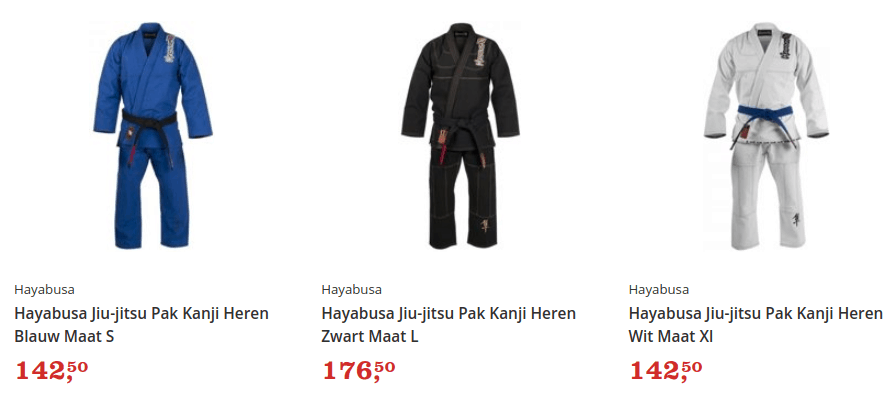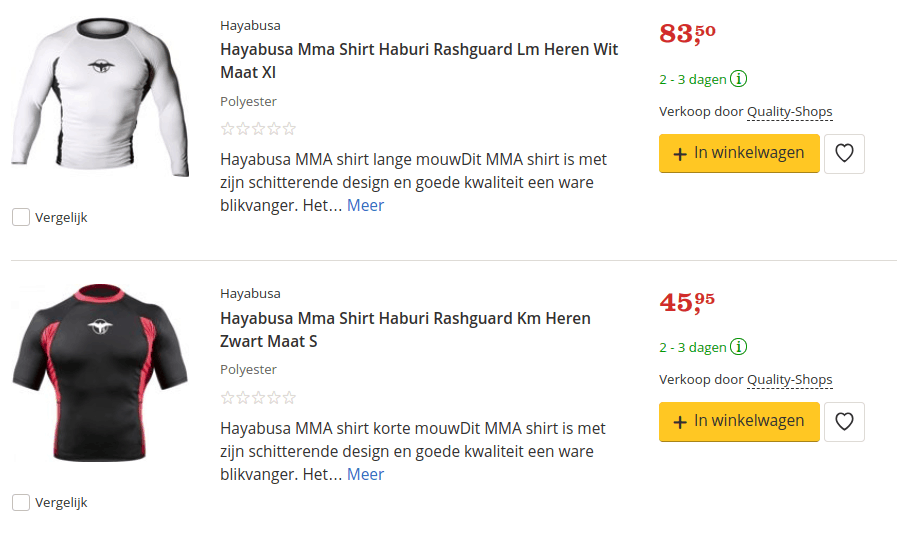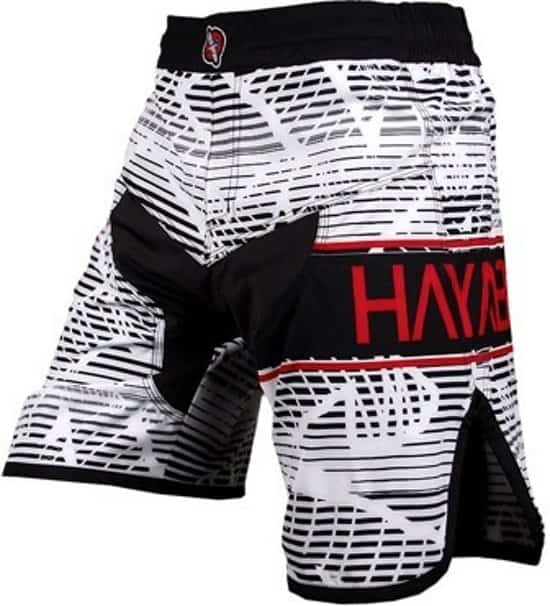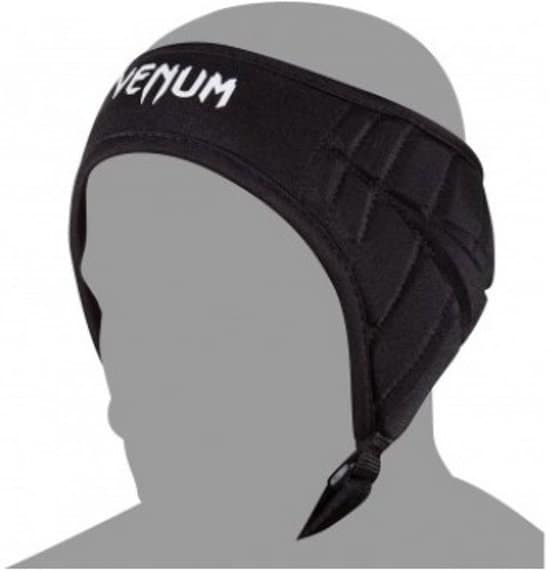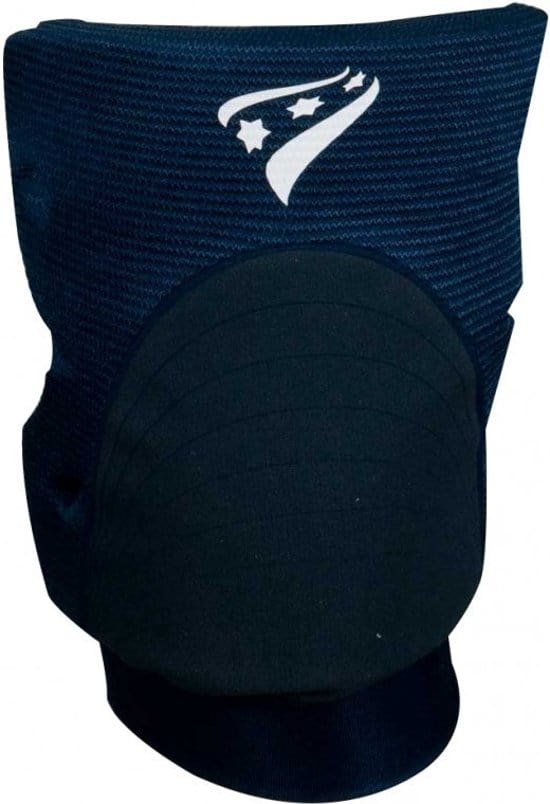I enjoy writing these articles for my readers, you guys. I don't accept payment for writing reviews, my opinion on products is my own, but if you find my recommendations helpful and you end up buying something through one of the links I may be able to receive a commission on that. More information
So you've heard about the latest fitness craze — something called Brazilian Jiu Jitsu (jiu jitsu from here) — and you want to get in on it. That is amazing!
I think jiu jitsu (along with judo) has changed my life and I think it will change yours too. It doesn't matter how old or physically (in) able you are, I think everyone can benefit from jiu jitsu.
But before you start your quest to learn jiu jitsu, there are some things you will need first. I've put together a list of accessories you need for jiu jitsu.
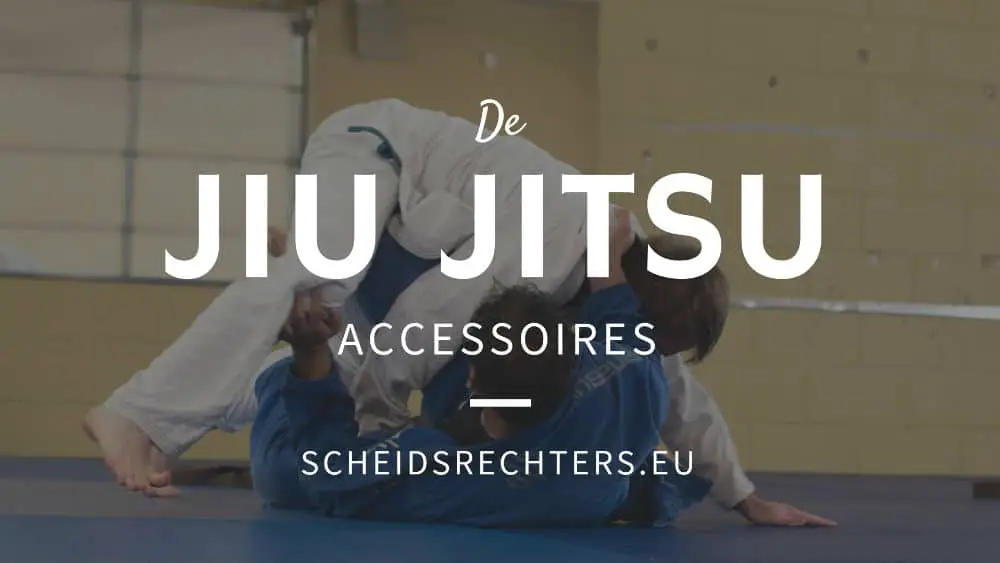
Jiu Jitsu is a sport with many rules, especially when it comes to clothing. In order to prepare you well for what you will need, I have included in this article what you can purchase for your training sessions and competitions.
Let's take a look at one of the most beautiful matches first:
What we discuss in this comprehensive post:
Requirements for Gi and No-Gi Divisions
The gi, or kimino, is the main item you need for jiu jitsu (unless you're doing no-gi). You will first need a Gi that fits you and a white belt that goes with it. As far as this goes, Hayabusa some cheap but durable jiu jitsu gis for sale.
Gi Requirements
It should be made with cotton or cotton-like material. It should not be so thick or hard that it would be difficult for the opponent to grab. It is mandatory that the gi be made with woven fabric.
EVA is allowed in the collar.
It must be all white, royal blue or black. Male athletes are not allowed to wear shirts under their gi.
In female divisions, athletes must use a stretch or elastic shirt that protects her body below the gi.
Protective equipment including: cups, groin pads, foot pads, head gear, hairpins, eye shields or other equipment made of hard material that could cause injury to an opponent or athlete is prohibited.
In adult black belt divisions, event organizers may require athletes to have two guesses of different colors to distinguish between the two competitors.
The Gi top should reach to the athlete's thigh and the sleeves should not be shorter than 5 cm from the wrist when the arm is parallel to the ground.
Gi pants should not exceed 5cm from the ankle bone. Men are not allowed to wear pants of any kind under the pants. Women are allowed to use stretch fabric pants under the gi as long as they are shorter than their pants.
Athletes must wear a belt 4 to 5 cm wide and be colored with a black tip according to his/her rank (except black belts then the tip must be white or red). The belt should be worn over the top of the Gi jacket.
Wrapped around the waist and tied in a knot. Once fastened, each end of the strap should be 20 to 30 cm long.
Painted guesses are illegal unless the paint is designed into an academy or sponsor logo. Even in this case, the paint should not mark his/her opponent's gi or they should change their gi.
An official gi inspector checks all gis prior to weighing to ensure they are following the rules.
Athletes may not change their guess before their first game after being inspected. After the first match, athletes can request permission to change and undergo a new inspection.
If they refuse to comply with these rules, the athlete will be disqualified.
Which Gi should I buy?
We love ourselves very much this Gis by Hayabusa. Very affordable and available in the different colors white, black and blue.
Here's what you need to know about guesses, they shrink when you wash them, but not that often (unless you put them in the dryer). So if you're in between sizes, choose the larger size.
In addition, having a bigger gi will make you a better jiu jitsu player as it will give your opponent more opportunities to grab you, increasing your defensive skills.
In terms of color, I recommend a black or blue gi because white gis stains too quickly.
And remember, do your class a favor and wash your Gi weekly. Ringworm is preventable.
No-Gi Requirements
Youth (age 4-17 years): Youth competitors may wear any color shorts and any color elastic shirt.
men: Board Shorts must be black, white or black and white and may contain up to 50% of the athlete's rank color.
No pockets, buttons, snaps, plastic or metal pieces are allowed.
The length should be longer than mid-thigh, but should not go below the knee.
Pants, shorts or trunks made of elastic material (compression type) are allowed as long as they are black and are worn under the regulation signs.
Shirts should be stretchy and long enough to cover the waist of shorts.
Shirts must be black, white or black and white and contain at least 10% of the athlete's rank.
Shirts that are 100% the color of the rank the athlete belongs to are also acceptable
Woman: Women must wear shorts or trousers that are black, white, or black and white, which may contain up to 50% of the athlete's rank.
The shorts or pants must be made of elastic fabric, do not contain pockets, buttons, press studs or other plastic / metal pieces.
Shorts should be at least long enough to touch mid-thigh, but not below the knee.
Shirts should be stretchy and long enough to cover the waist of shorts. Shirts must be black, white or black and white and contain at least 10% of the athlete's rank.
Shirts that are 100% the color of the rank the athlete belongs to are also acceptable
Long Sleeve Rash Guard
The rash guard is very important to wear because you will perspire a lot. You will either wear the rash guard under your jiu jitsu gi or you will wear the rash guard only when doing no-gi grappling.
Either way, you need a rash guard.
Hayabusa has some great durable rash guards. They are a bit more expensive than others, but you get what you pay for. Hayabusa guards will last for a while.
You have them in different price ranges:
fight shorts
Fight shorts, or MMA shorts, are excellent shorts to wear when you are struggling. They use velcro, are lightweight and absorb sweat well. Your shorts dry quickly and never have that musty smell after a session.
You can get these shorts anywhere from $50 – $70, depending on the brand, and at Bol.com do they have a great one:
mouthguard
If you plan to keep your teeth, you'll need a mouthguard. While mouth accidents are rare, they are enough to make you consider wearing a mouth guard while wrestling.
For mouth guards, I recommend you this one from Venum. It ensures that you do not lose your mouthguard and that it lasts a long time at the same time.
Clean with soap or toothpaste after each use.
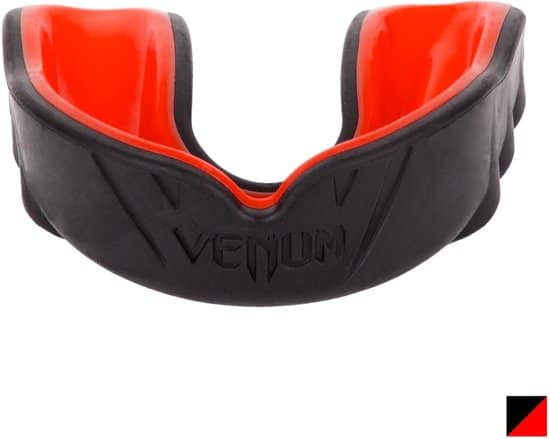
Read all about it here the best bits for martial arts
Grappling earmuffs
Cauliflower ears comes from a lot of time spent wrestling.
If you plan on just being a causal bjj player who only goes to school a few times a week but doesn't participate in the live wrestling sessions, then you probably don't need this. But if you plan on wrestling live, you'll probably want hearing protectors.
That is, if you don't want to get cauliflower ears as a result of wrestling. Venum's are good, and available here at Bol.com
Knee pads for wrestling in Jiu Jitsu
You'll probably want to wrestle in knee pads if your jiu jitsu school puts a lot of emphasis on standing wrestling and takedowns.
The knee pads protect your knees in the event of a collision with the ground. If your jiu jitsu school doesn't focus too much on grappling or takedowns, you can probably get away with no knee pads. I use these Match Pro knee pads from Rucanor.
There you have it, the gear you should have when you start jiu jitsu. The last two items (earmuffs and kneepads for takedowns) are not absolutely necessary, depending on your preference.
However, the first few items are must-have gear if you want to take jiu jitsu with you. Good luck!
Referee Gestures and Verbal Commands
Give competitors permission to enter the competition area
The arms are raised to the shoulders and bent 90 degrees with the palms facing in.
Verbal command: N/A
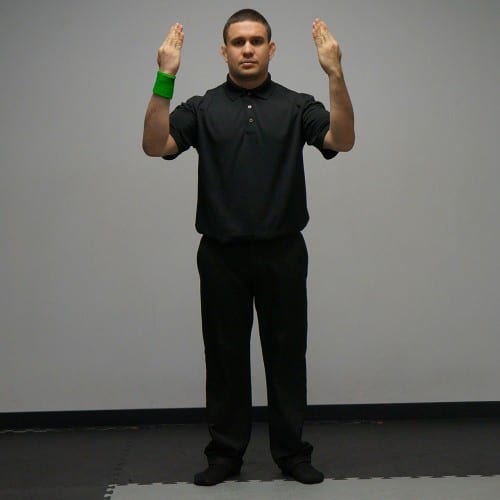 Start of the match
Start of the match
The arm extends forward and down to point toward the ground.
Verbal Command: Combate (com-ba-tchee)
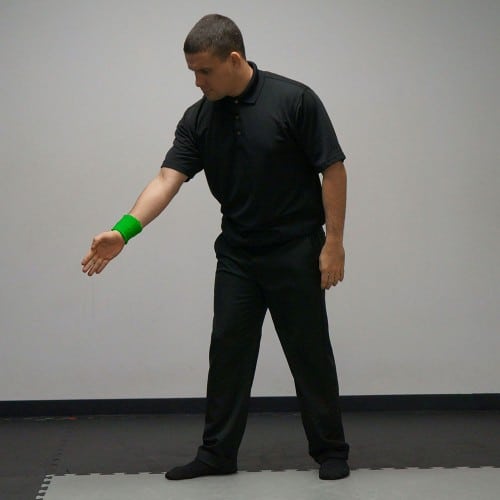
Pause the fight, stop the time and the timeout
Arms outstretched to the left and right at shoulder height
Verbal Command: Parou (pa-row)
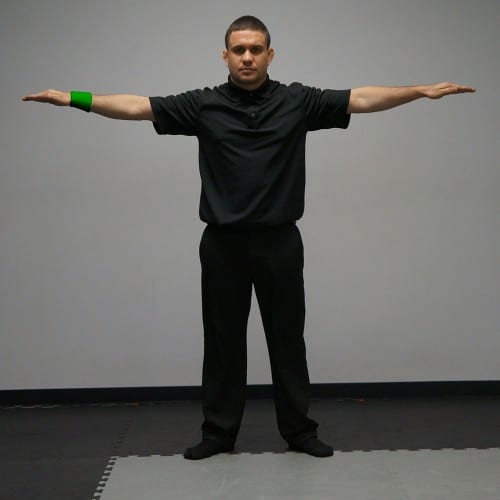
Penalty for stalling or serious foul
The arm corresponds to the penalized athlete being pointed to their chest followed by raising the fist to shoulder height.
Verbal Command: Lute! (lu-tchee) – Stalling
Verbal Command: Falta! (fal-tah) – Serious offense
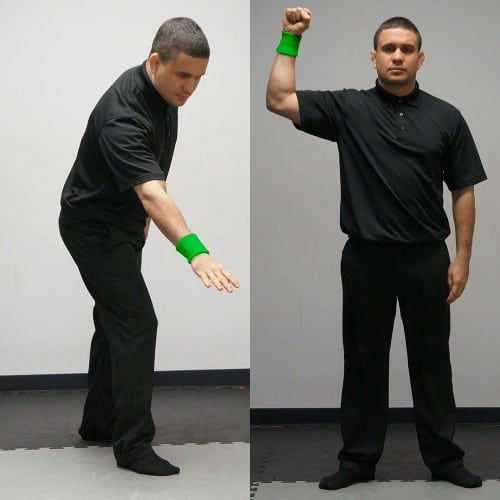
Disqualification
Arms above each other with forearms crossed and both hands in fists. Followed by pointing at the disqualified Athlete Belt with the corresponding hand.
Verbal command: N/A
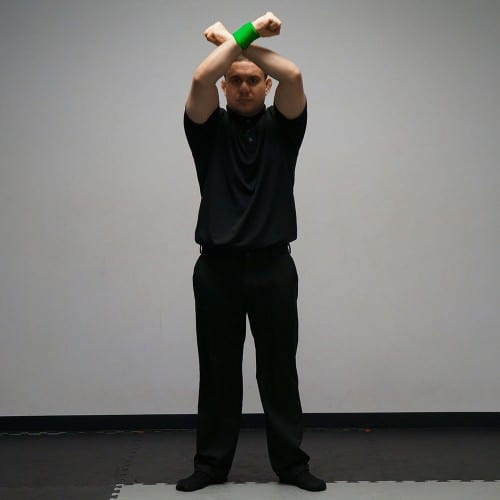
Benefit
The arm corresponding to the advantage awarded by the athlete is extended parallel to the mat with the open palm facing down.
Verbal command: N/A
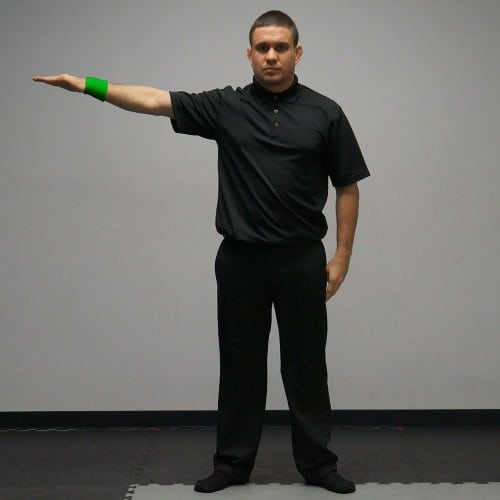
Two (2) points
(take down, sweep, knee on belly)
The arm corresponding to the scoring athlete is raised upwards with two fingers.
Verbal command: N/A
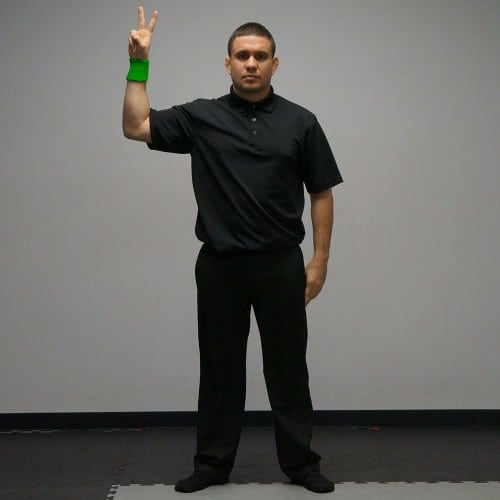
Three (3) points
(guard pass)
The arm corresponding to the scoring athlete is raised upwards with three fingers.
Verbal command: N/A
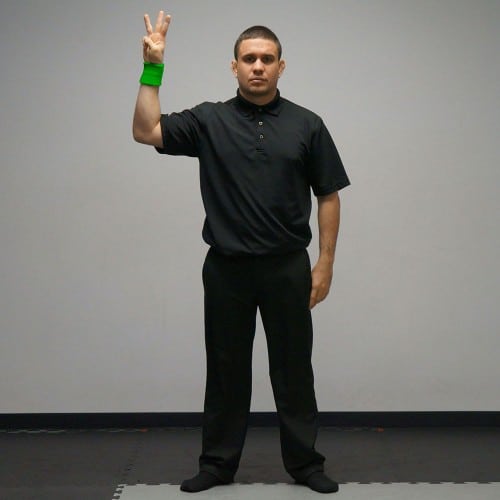
Four (4) points
(mount or back control)
The arm corresponding to the scoring athlete is raised upwards with four fingers.
Verbal command: N/A
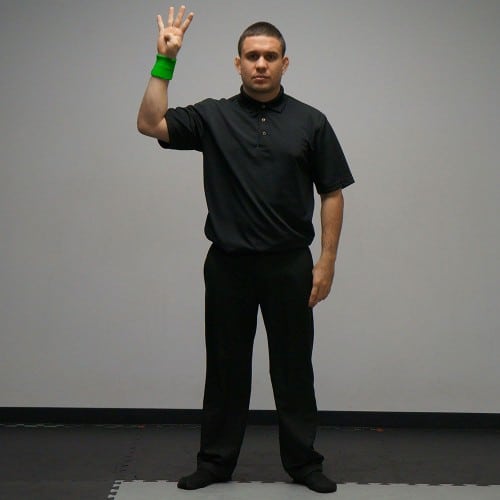
Point deduction
Arm corresponds to the penalized person at shoulder height with elbow bent and palm facing down towards the referee.
Verbal command: N/A
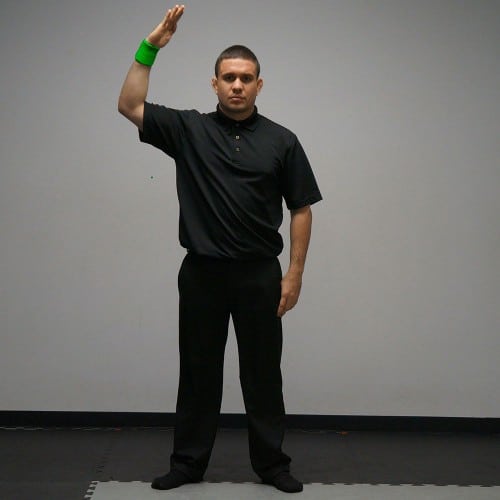
Direct athlete to customize his/her Gi
Arms crossed down at waist height.
Verbal command: N/A
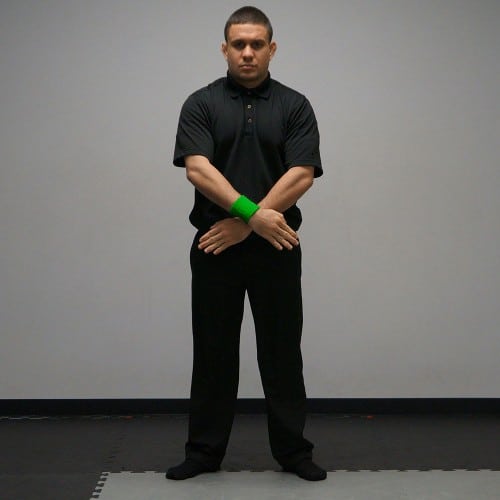
Direct athlete to refasten belt
Hands at waist height simulate the tightening of an imaginary belt knot.
Verbal command: N/A
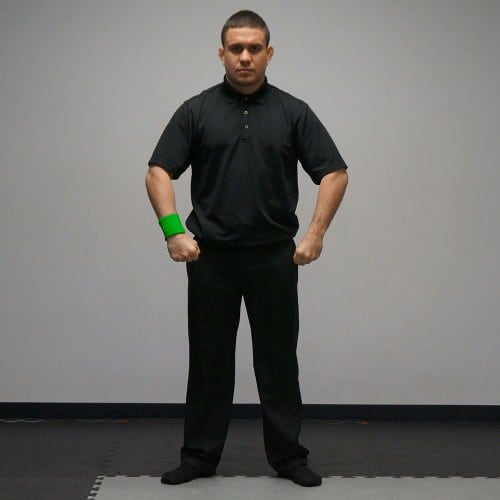
Remind the athlete to stay within the competition area
After pointing in the direction of the corresponding athlete, point one finger at the sky while making a circular motion.
Verbal command: N/A
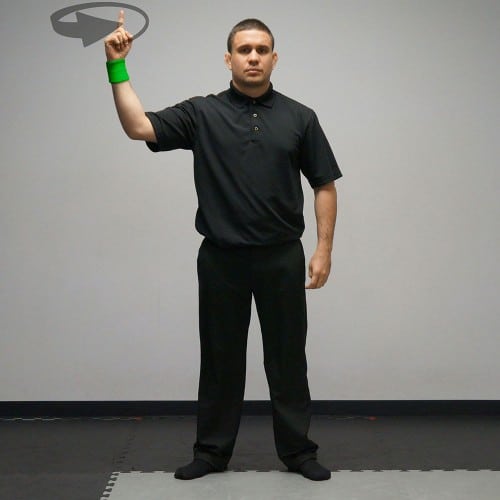
Tell athlete to stand up
Extended arm indicates who should stand, followed by arm raise to shoulder height.
Verbal command: N/A
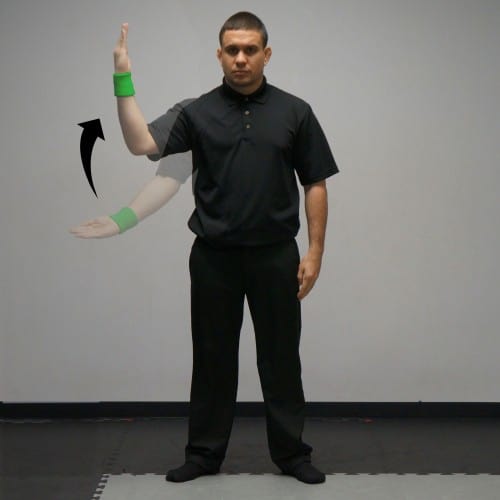 Instruct the athlete to return to the ground at the designated place
Instruct the athlete to return to the ground at the designated place
Arm corresponds to athlete extended to shoulder height followed by pointing down toward the ground.
Verbal command: N/A
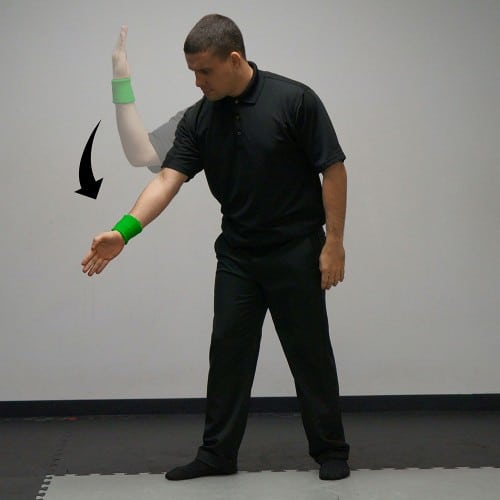
Ways to win
Submission:
When an athlete taps his/her opponent twice with hand or foot, ground, himself
When the athlete verbally requests the match to stop or express pain.
stop page:
When the athlete claims to be suffering from cramps.
If the umpire believes that holding in place will cause serious injury to the athlete.
If the doctor says that one of the athletes is too badly injured to continue the competition.
When an athlete suffers from unstoppable bleeding after being treated twice.
When an athlete loses control of basic bodily functions or vomits.
Disqualification: See Penalties
Loss of consciousness
To score:
The athlete who earns the most points is declared the winner.
If the number of points is equal, the athlete with the most advantages will be the winner.
If the number of points AND the number of benefits are equal, the athlete with the fewest penalties is declared the winner.
Decision:
If there is an equal number of points, number of advantages AND number of penalties, it is the duty of the supervising referee to declare a winner.
The referee must choose the athlete who committed a greater offense during the match.
Random choice:
If both athletes are accidentally injured in a semi-final or final match and the score is the same at the time of the accident, the result will be determined by random selection.
point scoring
Points are awarded by the referee when an athlete takes a position for 3 consecutive seconds.
Points are not awarded for athletes who relinquish a position to score points again with the same position.
Athletes who reach a points scoring position while caught on a submission guard must first free themselves and then hold the position for 3 seconds before points are awarded.
No hit points are awarded when an athlete defends a sweep and brings his opponent back to his side or to the ground.
Athletes defending standing back control, where the opponent has one or two hooks in place and not one foot on the mat, may not receive takedown-related two points or advantage even after he/she has stabilized the position for 3 (three ) seconds.
Athletes who attempt to take out before their opponent goes on hold will receive 2 points or advantage points.
If an athlete has a grip on his/her opponent's pants when their opponent pulls the guard and they stabilize the top position for 3 seconds, they get 2 points for a takedown.
Athletes will receive cumulative points as they progress through a series of point scoring positions, as long as the 3-second stabilization continues from first position to the next and an additional 3 seconds are added to the last move of the series before points will be called.
When an athlete transitions from back mount to mount (or vice versa), and the 3 second stabilization is achieved in both positions, they will receive 4 points for each position.
Positions:
- Takedown (2 points)
- Security pass (3 points)
- Knee on stomach (2 points)
- Mount and Back mount (4 points)
- Back Control (4 points)
- sweep (2 points)
Benefits
Advantage point is earned when an athlete gets to a point scoring position but is unable to maintain control for a full 3 seconds.
When a move to a scoring position is incomplete but clearly approaching.
When an athlete attempts a submission where his/her opponent runs a real risk of being sent in.
Advantage points can be awarded after the match has ended, but not after the announcement of the results.
Advantage points can only be awarded after there is no more chance of scoring points for that position.
If an athlete is attacked by a submission and reaches one or more point scoring positions, they will receive an advantage point.
Violations
(See Penalties for more information on the consequences of committing a foul)
Serious violation
Technical errors:
- If an athlete's gi is useless.
- If the athlete intentionally leaves the competition, he must escape it.
- If an athlete attempts to disqualify his or her opponent by placing his/her opponent in an illegal position.
- If an athlete does not wear underwear.
- If an athlete applies a slippery or oily substance to their hair, body or gi.
- If an athlete uses substances that make him sticky.
- When an athlete tries to strangle his/her opponent with one or both hands or puts pressure on the trachea with his thumb.
- When an athlete prevents the passage of air by covering his/her opponent's nose and mouth.
- When an athlete defending a single leg does it, he/she intentionally has his/her partner hit his/her head on the ground by holding on to the attacker's belt and pulling him/her to the ground.
- A suplex-like movement that forces an opponent's head or neck into the ground. (A suplex takedown or lifting an opponent by the waist to score a take down is allowed as long as the move does not force the opponent's head or neck into the ground)
- When an athlete uses a hold prohibited in his/her division.
- Knee harvesting (more information coming soon!)
See: Illegal Techniques
Disciplinary Errors:
- Using profane language, gestures or other offensive behavior towards his/her opponent, officials or the public.
- The Exhibition of Hostile Behavior.
- When an athlete bites, pulls hair, hits or puts pressure on genitals or eyes.
- When an athlete does not respect the seriousness of competition.
- Serious violation
- When an athlete kneels or sits with no grip on his opponent
- When an athlete leaves the competition area to avoid attack by the opponent
- When an athlete pushes his opponent out of bounce without trying to score
- When an athlete rises from the ground to avoid a fight and does not return to the ground
- When an athlete breaks his/her opponent's grip who pulls guard and doesn't come back to fight
- When an athlete removes gi or belt to intentionally stop the match
- When an athlete grabs his/her opponent's sleeve or trouser leg with fingers in the garment
- When an athlete grabs his/her opponent's jacket or pants, steps into his/her jacket or puts his/her arm through the sleeve
- If an athlete communicates with the referee for any reason other than medical or uniform matters
- If an athlete ignores the referee
- If an athlete leaves the competition area before the referee announces the results
- When an athlete leaves the competition area to deliberately prevent his/her opponent from completing or knocking down a sweep (in this case, the referee will award 1 penalty point to the athlete who left the competition area and 2 points to his opponent)
- In No-Gi, if an athlete grabs to hold his/her opponent's clothes
- If an athlete places a hand or a foot on the opponent's face
- When an athlete puts his/her foot in the opponent's belt
- When an athlete puts his/her foot on the opponent's lapel without handles
- When an athlete places his/her foot on the opponent's label BEHIND the neck, regardless of the circumstance
- If an athlete uses his/her belt to assist with a choke
- If an athlete belt is loosened at any time during a match
- When an athlete takes longer than 20 seconds to re-tie their belt during a competition
- When an athlete walks around the competition area to avoid a fight
- When an athlete places his/her opponent in an illegal position
- In White Belt Division, if an athlete jumps into closed guard while his opponent stands still
Stabling Foul:
- When an athlete does not aim for position progression during a competition or when an opponent does not allow progress.
- When both athletes show stables at the same time
- When both athletes are on guard at the same time, they have 20 seconds for one of them to reach the top position, have a submission on hold or complete a points-scoring move, the referee will interrupt the fight and award both with penalties.
Penalties
(Check out Fouls to see a list of severe penalties, severe penalties, and riot penalties)
Heavy punishments
Technical Penalties: Disqualification at the Time of Violation
Disciplinary Penalties: Disqualification at the Time of Violation
Serious Punishments
First penalty: the referee will mark the first penalty
2nd penalty: Advantage point awarded to opponent of penalized athlete and 2nd point marked for penalized athlete
3rd penalty: 2 advantage points awarded to the opponent of a penalized athlete and a third point marked for a penalized athlete
4th Penalty: Disqualification
All penalties are cumulative including those received for lack of combativity
Penalties
The referee counts 20 seconds and awards a penalty point
If the athlete has already received severe penalties, these fines will be added together
Competition Requirements
Athletes are only allowed to take their weight once
Athletes may weigh in without knee or elbow braces, but they must be inspected
Athletes with collegiate wrestling experience, who have earned a black belt in Judo, or who have played professionally in MMA, are not allowed to compete in the white belt division.
The athlete may not have shoes or other items in addition to his/her gi and equipment that are allowed during the tournament
Patches may only be placed in authorized areas of the gi
No patches or text are allowed on clothing that contains text or symbols that may be offensive to gender, sexual orientation, ethnicity, culture, religion and politics.
No stains or text should be placed on clothing that promotes violence, vandalism, sexual acts, drugs, alcohol or tobacco
A GI brand label in the front lower part of the pants and a maximum of 36 cm squared is allowed
The use of foot gear, headgear, hairpins, jewelry, groin guards or any other protector made of hard material that could injure an opponent is prohibited. Eye protectors are also prohibited in all cases
Female athletes are allowed to cover their heads. Headgear must be attached and made with elastic fabric, must not contain any hard or plastic material, must not contain any strings, must be free of logos, be completely black
Any joint protectors large enough to make it difficult for your opponent to grip the Gi are prohibited
Undergarments are required
Lees meer: the best martial arts shin guards


